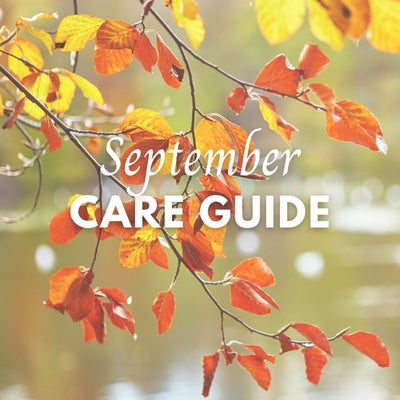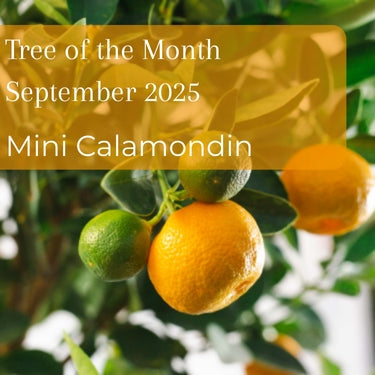Pomegranate Tree Facts:
- Latin Name: Punica Granatum Nana
- Hardiness: Moderately hardy. Enjoys a full-sun environment and needs protection in temperatures under 10°C
- Pollination: Self Fertile
- Height: Our Pomegranate tree gifts are a dwarf variety, so expect a height of 2-4 feet (60-120cm)
- Flowering: Spring-Summer
- Harvest: Autumn
- Suitable for: Garden planting or pot planting for protection during winter
- Difficulty: Moderate
How to care for Pomegranate Plants

Although Pomegranate plants are traditionally grown in warmer, Mediterranean climates, it does not mean that they can’t be grown in Britain, even with the colder weather we experience in our day-to-day.
Our varieties of Espalier Pomegranate and Mini Pomegranate are much hardier in cooler weather than the traditional, larger versions that are grown in Italy. Though they are no less impressive!
The Punica granatum ‘Nana’ is a dwarf variety and is a multi-stemmed tree that can produce orangey-red flowers in the spring and summer months, followed by the iconic bright red pomegranates in late summer. The fruits grow and mature while hanging on the branches of the tree for a couple of months before they are ready to be harvested in the autumn months. Making them a beautiful tree gift, that keeps on giving!
Location
Our Pomegranate tree gift ideally needs a sunny corner of the garden to thrive in, to get the most out of the tree, it needs to receive around 6 hours of sun per day, although it can live on as little as 4-5 in more sheltered gardens. In the colder months, you should take steps to protect the tree from frost and harsh winds.
Before planting, consider that Pomegranate trees prefer well-draining soil, as they traditionally come from the Mediterranean where the conditions are far drier. If you would like to provide the perfect growing conditions for the tree, it is good to know that they typically prefer slightly acidic soil.
Pests and Diseases
Pomegranate trees are rarely attacked by pests and diseases, making them a great low maintenance gift for a loved one. However, they can be affected by some bugs, if this does happen then use a pomegranate-specific pesticide and the issue should clear up in no time!
Pruning
Ideally, you should expect to prune your tree during winter dormancy. Make sure to leave flowering shoots to bloom, but it is recommended to remove some flowers before fruit begins to emerge, this is to prevent the branches of the tree from being weighed down too much.
Repotting
If you choose to keep your pomegranate tree in a pot, it is best to transfer the tree once the buds are beginning to grow, this will probably be in mid-spring.
Dwarf pomegranate trees usually need to be repotted every 2- 3 years, their roots can be pruned back where needed and you should aim to repot them into well-draining, slightly acidic soil.
Watering
You should expect to water your Pomegranate tree when the soil is dry, while they are hardy to drought-like conditions, it is best to keep an eye on their water levels as under-watering can affect the growth of fruit.
If the tree is flowering, make sure that the soil stays slightly moist, this practice should be carried through to the winter months too.
Send a Pomegranate Tree as a Meaningful Gift
So there you have it!
We believe that Espalier and Mini Pomegranate trees make wonderful gifts for special occasions. Whether it’s a birthday, anniversary or wedding, pomegranate trees really do add a touch of the exotic to gardens and outdoor spaces, the big bonus is that they’re tasty as well as unusual.
Discover the perfect gift from Tree2mydoor.com and add a personalised greetings card to your order at the checkout, then select a delivery day of your choice and we will do the rest!


